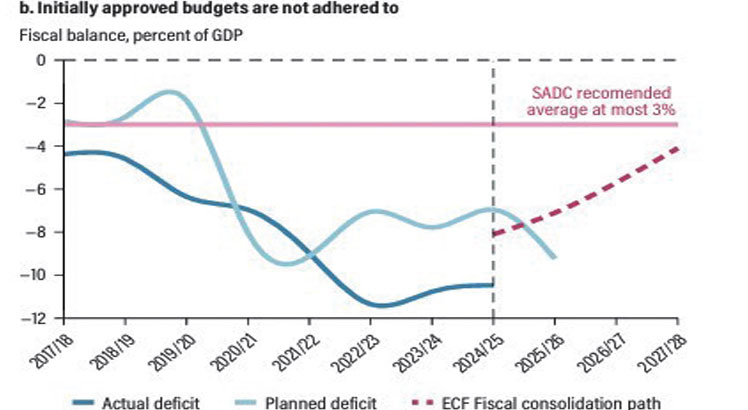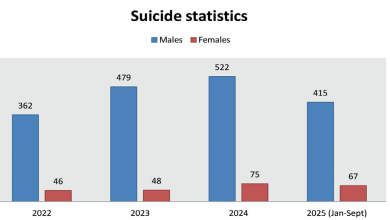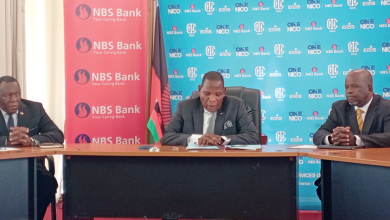Stick to borrowing plan—economists
Economists have urged the Treasury to stick to its annual borrowing plan to minimise the risk of negatively affecting the government’s target to reduce fiscal deficit projected at 9.5 percent of the country’s gross domestic product (GDP).
The economists expressed the sentiments in separate interviews in reaction to the Reserve Bank of Malawi (RBM) data showing that Malawi Government has borrowed K2.19 trillion on the domestic market in the first five months of this fiscal year that started in April, representing 94 percent of the planned K2.33 trillion borrowing.
There was a surge in borrowing prior to the September 16 General Election as data showed that government borrowed K1 trillion through Treasury bills and Treasury notes in July and August, which was more than double the planned target of K449.63 billion.
Speaking in an interview on Monday, Malawi Economic Justice Network executive director Bertha Phiri said excessive borrowing is bound to suffocate the economy, which is risky at a time debt levels are already unsustainable.
She said: “Malawi needs the dismantling of such a debt acquaintance system and policies demand fiscal prudence. The annual borrowing plan is one such affirmative legal framework.
“This excessive borrowing is risking Malawi and suffocating the economy even more. It is risky because what it means is that we are mortgaging Malawi and its economy.”
On his part, University of Malawi associate professor of economics Gowokani Chijere Chirwa said in an interview on Monday that the situation means that future production efforts will be mainly filling the gap that has been created, noting that this is a burden to the future generations.
He said: “This is a very bad situation because it has already ‘eaten our future’ income, which we may generate because that means we will be producing just for others since we will be forced to repay this.

“This means we are putting future generations in shackles of loans.”
In a separate interview, finance expert Brian Kampanje urged government to adhere to the borrowing plan in line with Section 72 of the Public Finance Management Act.
He said: “This might, therefore, indicate extra expenditures outside the budget, which have to be authorised through the Mid-Year Budget Review Meeting.
“It might also indicate that the actual deficit will be much higher than the anticipated K2.47 trillion in the current fiscal year.”
Kampanje said the elevated domestic public debt pushes up interest rates, which is not conducive for the private sector and motivates banks to lend more to the government, resulting in a crowding out effect.
“This is not good for economic growth as the private sector has fewer credit opportunities for both capital expenditure and daily operations,” he said.
Economics Association of Malawi president Bertha Bangara-Chikadza is quoted as having said in The Nation that the continued budget deficit is a concern, adding that government’s fiscal pressure mainly heightens in the coming quarters of the economic lean period.
She said the current situation underscores the challenges the government is facing to effectively fulfil its mandate.
Ministry of Finance and Economic Affairs data shows that as at September 2024, Malawi’s total public debt stock was K16.19 trillion or 86.4 percent projected GDP, with external debt stock recorded at $4.27 billion (about K7.4 trillion) while domestic debt was recorded at $5 billion (about K8.79 trillion).
In the 2025/26 K8.05 trillion National Budget, the Malawi Government is expected to close the fiscal year on March 31 2026 with a fiscal deficit of K2.47 trillion or 9.5 percent of GDP, which will be primarily financed through domestic borrowing amounting to K2.33 trillion and foreign borrowing of K145.78 billion.
In the previous financial year, the overall deficit was recorded at K1.79 trillion, representing 9.6 percent of the country’s GDP.





